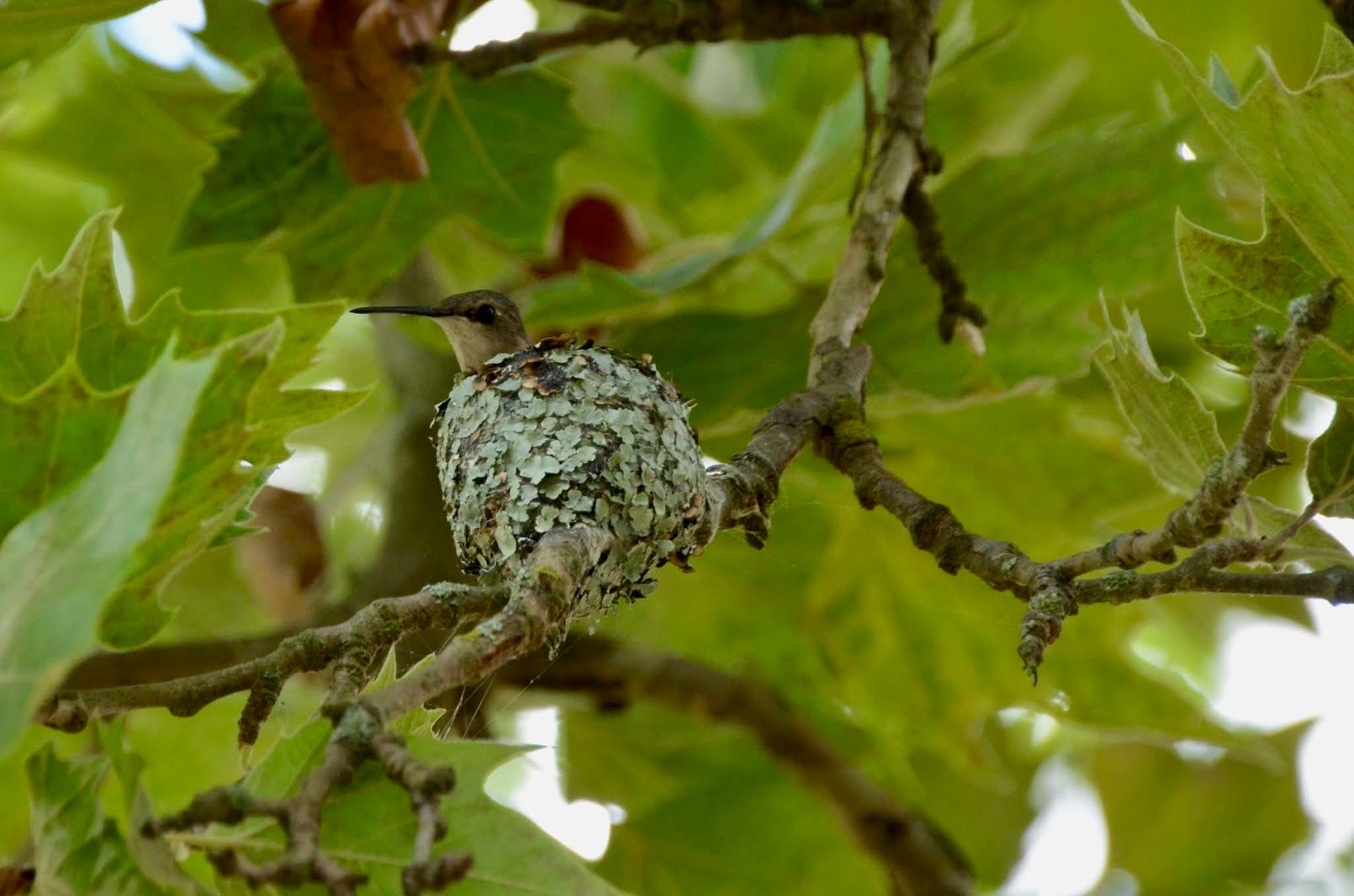

They build their tiny, expandable nests on tree limbs and other small horizontal surfaces, often constructing them from lichens and spider webs. Hummingbirds prefer to nest near a ready supply of nectar and other food, and you can encourage them to nest in your yard by maintaining some shrubbery and small deciduous trees in which they can seek protective cover, especially around the edges of your yard. An entire corridor of habitat is much more valuable than scattered patches. Encourage your neighbors to make their yards hummingbird friendly.Minimize or eliminate the use of pesticides in your yard.Leave some sticks and small branches on bushes and trees to enable ready perches for hummingbirds.Group similar plants together and choose species with different blooming periods so that there will be a steady supply of flowers nearly year round.Plant native red or orange tubular flowers to attract hummingbirds, in addition to native plants rich in nectar.Grow native plants like trumpet honeysuckle, bee balm, and hummingbird sage, which provide much more nectar than hybrids and exotics.To create a customized list of bird-friendly native plants for your area and get connected to local native plant resources, check out our native plants database. Even one plant in a window box or hanging basket can help. Fill your yard with native flowering plants, vines, shrubs, and trees.You can create a healthy environment for hummingbirds with these steps: Unfortunately, due to development and climate change, hummingbird-friendly habitat may be changing across many hummingbird migration routes. Sugary nectar supplies fast energy and makes up 90 percent of a hummingbird's diet. Hummingbirds are specialized for nectar-eating, evident by long bills and grooved tongues ideal for probing flowers. Flowers, perches, insects, and water are the key ingredients to a healthy yard that will attract these amazing jewels. You can attract, feed and nourish hummingbirds in your backyard with a few easy steps. You can learn about recommended native plants that attract hummingbirds here. These native plant groups can have a variety of species that span the country. Pitcher sage/Hummingbird sage, Salvia spathacea.Native to California, the southwest, southeast, east and mid-west sections of the country Sages Native to the southeast, east and mid-west sections of the U.S. Coral honeysuckle, also known as Trumpet honeysuckle, Lonicera sempervirens Native to California, New Mexico, Texas, southeast, east and mid-west sections of the U.S. Native to the Pacific northwest, east and mid-west sections of the U.S. Native to California, southwest and southeast sections of the U.S. Native in southwest, Pacific northwest, mountain west, southeast, east and mid-west sections of the U.S.

Beebalm, Wild bergamot, Horsemint , Monarda fistulosa.Interested in some of the initial findings? Here are some of the most commonly reported native plants through Hummingbirds at Home: Beebalms Results from 2013 to 2018 were published in the peer-reviewed journal Landscape and Urban Planning in 2020. Over the program's run, 21 hummingbird species were reported to Hummingbirds at Home as well as 371 identified blooming plant species. We received thousands of feeding reports that are an important first step to understanding the important relationship between hummingbirds and their food sources. As plant bloom times change in response to climate change, do hummingbirds adapt to feed from other nectar plants? From this, Audubon scientists studied how this reflects the changing climate’s impacts on hummingbirds and their habitats. One goal of Hummingbirds at Home was to learn more about hummingbird feeding habits from a variety of nectar sources. Wanting to help these amazing birds, participants in Audubon’s Hummingbirds at Home observed hummingbirds and their insatiable feeding, and reported their observations to the program. Those hefty appetites were the focus of Hummingbirds at Home, a community science program run by Audubon from 2013 to 2021. To sustain their supercharged metabolisms, hummingbirds must eat once every 10 to 15 minutes and visit between 1,000 and 2,000 flowers per day. The Rufous Hummingbird undertakes the longest avian migration in the world, if based upon distance traveled in proportion to body size. A diverse family, hummingbirds include the world's smallest bird, the Bee Hummingbird of Cuba, and some of the strongest migrants. Hummingbirds are truly remarkable and fascinating creatures.


 0 kommentar(er)
0 kommentar(er)
